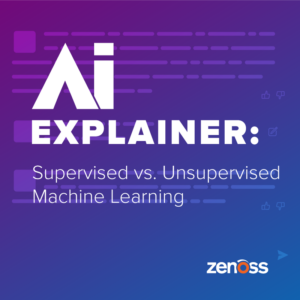
- The IT budget remained the same year-over-year, but IT’s responsibilities grew or,
- The IT budget was reduced while the responsibilities stayed the same.
As 2012 looms on the horizon, IT executives are struggling with the budgetary process and are trying to find some breathing space in all of the bad news.
Every obvious cost reduction strategy has already been tried or adopted
The organization has already outsourced research and development to a third party or moved development to a country that offers a lower overall cost structure. While this approach lowered some staff related costs, other issues came to the forefront. Some of them were difficult to resolve. Quality control and timeliness of project deliverables created some challenges. When bugs or workload slowdowns emerged, it was more difficult to get the right people focused on the problem. This approach has worked for some organizations but has not been so successful for others.
Helpdesk and support functions were outsourced to a third party or the support functions were moved to a lower cost environment. As with R&D, this move worked for some and created challenges for others. Response time or language issues created staff satisfaction and productivity issues. When customers became unhappy and couldn’t get the support they wanted, embarrassing comments hit the social media. Although it is not clear, some revenue slowdowns could be attributed to this issue.
Systems, network, application and database operational management functions were outsourced or they were moved to another geographical area. As with R&D, Helpdesk and support functions, this move created some challenges — for the same reasons. If IT applications and workloads were working well, this approach to operational management was observed to lower some costs. When things went wrong, however, staff and customers complained.
Windows and Linux workloads were consolidated on a fewer number of industry standard systems. While this approach did lower overall hardware and maintenance costs, now the organization needs staff that understands virtual machine software, monitoring software for virtual environments and VM orchestration software along with all of the other types of expertise already needed to support day-to-day operations.
To reduce software acquisition costs, the organization moved to adopt some open source software tools. This reduced the overall software license and maintenance costs, but key staff members needed additional training.
The key question now is what can be done in 2012 to address the changing business environment while still living within the IT budget.
Some thoughts about making the 2012 budget work
Although the nebulous phrase “cloud computing” appears scary and unworkable to some IT executives, others are learning that it isn’t an all-or-nothing approach.
Some organizations are taking the following steps to see if new places can be found for cost containment, steps that won’t reduce overall service levels seen by staff members or customers.
- Examine real estate costs — Can some data centers be consolidated to reduce costs? Can some functions be moved to the data center of a service provider? Either of these steps could reduce overall real state costs.
- Examine communications costs — Can lower cost communications suppliers be found?
- Can old applications developed in house years ago be replaced? A number of applications might be replaced by a move to Software as a Service (SaaS) offerings. Collaborative software, planning software, R&D modeling and testing software and a number of other tools might be replaced by service offerings.
- Examine the systems deployed today — Those supporting day-to-day operations could be maintained. Other systems, systems that support quarter end or year end processing might be outsourced. Infrastructure as a Service (IaaS) offerings from a number of service providers might offer a lower cost way to handle those processing needs.
Summary
IT’s issues for 2012 are complex and there isn’t a single silver bullet offering a tidy solution. A careful examination of what the organization is current doing might yet yield new ways to support today’s operations at a lower overall cost.
Cloud computing, while not a panacea, might be a very useful tool to consider for point problems. Maintaining management control of local, virtual and cloud-based resources, once considered an obstacle can be overcome. So can concerns centering on the topics of security, regulatory compliance and business agility can also be addressed.
Another very important consideration is the fact that each IT function has a complete lifecycle. Projects are based upon a cycle of activities that include gathering requirements, prioritizing the requirements, developing IT-based systems to address those requirement, testing those IT-based systems, putting them into production, and then gathering requirements for the next cycle. At one point the IT-based systems might be run on-premise and later moved off-premise and execute from a service provider’s facility. At another point, it might be best for the organization to move them back in-house. Organizations must remember to use tools that make it possible to manage IT-based systems, regardless of whether they execute on-premise or off-premise on physical, virtual or cloud-based systems.
Image via berlinlocation






